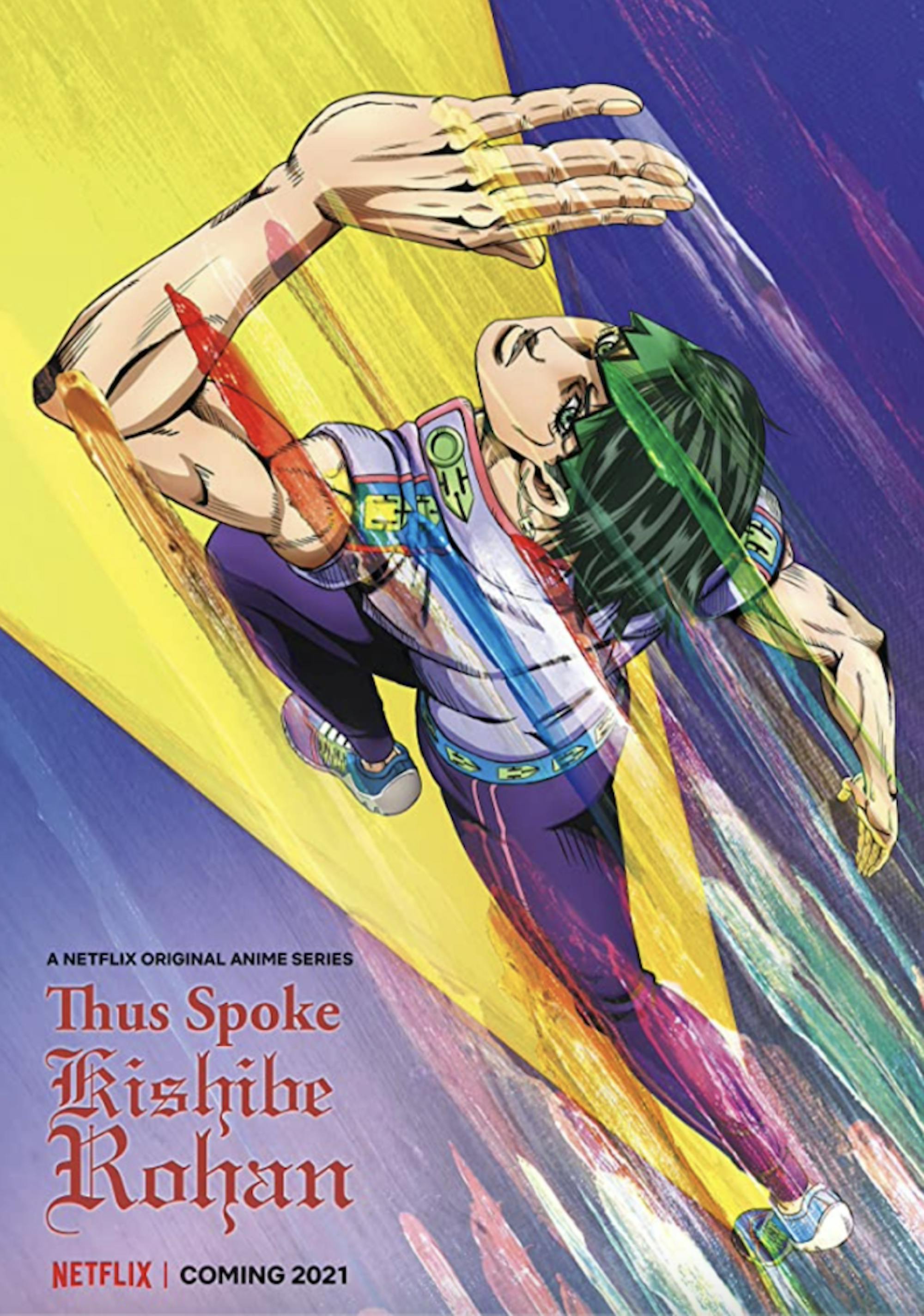Television is a funny medium, being that a viewer can become totally absorbed in a world in as quickly as ten minutes or over a myriad of seasons. All the more reason why Netflix’s recent anime importation, “Thus Spoke Kishibe Rohan” (2021), is disappointing, given it had roughly 100 minutes to tell its tale, and I was left feeling more confounded than intrigued for around 75 of them. Spinning off of the popular “JoJo’s Bizarre Adventure” (2012–) TV series, the show follows Rohan Kishibe, a manga artist living in the small town of Morioh, the setting for the fourth series of “JoJo,” “Diamond is Unbreakable” (2016). The problem is that you wouldn’t know that unless you had watched “Diamond is Unbreakable,” and if you had, you would no doubt have an easier time decoding Rohan’s muddled characterization.
In some moments, Rohan is a too-cool eccentric who can’t be bothered to worry about looking sane, taking such extreme lengths as to impersonate a priest and purchase huge tracts of worthless land all for the purpose of researching his next manga story. In other episodes though, he seems to be a put-upon young artist who looks before he leaps. The fact that there isn’t much connective narrative between episodes leaves the viewer with a confused portrait of a character they barely have time to know despite his name taking up half the title.
The first episode, “At a Confessional” sees Rohan recount a trip to Italy where he overheard a man confess to being involved in two grisly murders in an extended flashback. The animation is a bit stiff, with heavy shading highlighting muscle definition and clothing folds, but also looking strange when those muscles and folds remain static. The pacing here feels tight, though the “flashback within a flashback” style feels odd and leaves Rohan as a passive observer rather than an active protagonist.
Episode 2, “Mutsu-kabe Hill,” carries over the more horror tone of the first episode but overshoots the mark and becomes an unpleasant mess. Centering around the accidental murder of a rich woman’s lover, the episode takes turns that make it seem less like a gasp-worthy suspense thriller and more like a gore-fest horror movie.
Episode 3 on Netflix, “Millionaire Village” is the most Rohan-centric episode thusfar.Though bogged down by exposition in the first half, it gives way to a darkly comedic second act revolving around a mysterious property that catches the eye of Rohan's editor. Rohan takes center stage in this adventure, and while I would point to this episode as the turning point of the series, it must be said that another draft of the script and a more trim narrative would make for a more cogent viewing experience.
The series’ final episode, “The Run,” was my personal favorite of the bunch, so much so that I would recommend it without any caveat. It details Rohan’s fitness contest with a young man who’s more than he seems. The animation shines in this episode, with every muscle fiber of each athlete being pushed to the extreme as their competition heats up and moves from a lighthearted game to a battle for survival. Make no mistake, this is the main attraction of the series.
If you’re willing to stomach some of the less palatable features of “Thus Spoke Kishibe Rohan,” or you’re a diehard "JoJo" fan looking for a fix before the next season, then give it a watch; otherwise, prepare for a series built on a combination foundation of stone and sand: shifty in some parts, solid in others.






